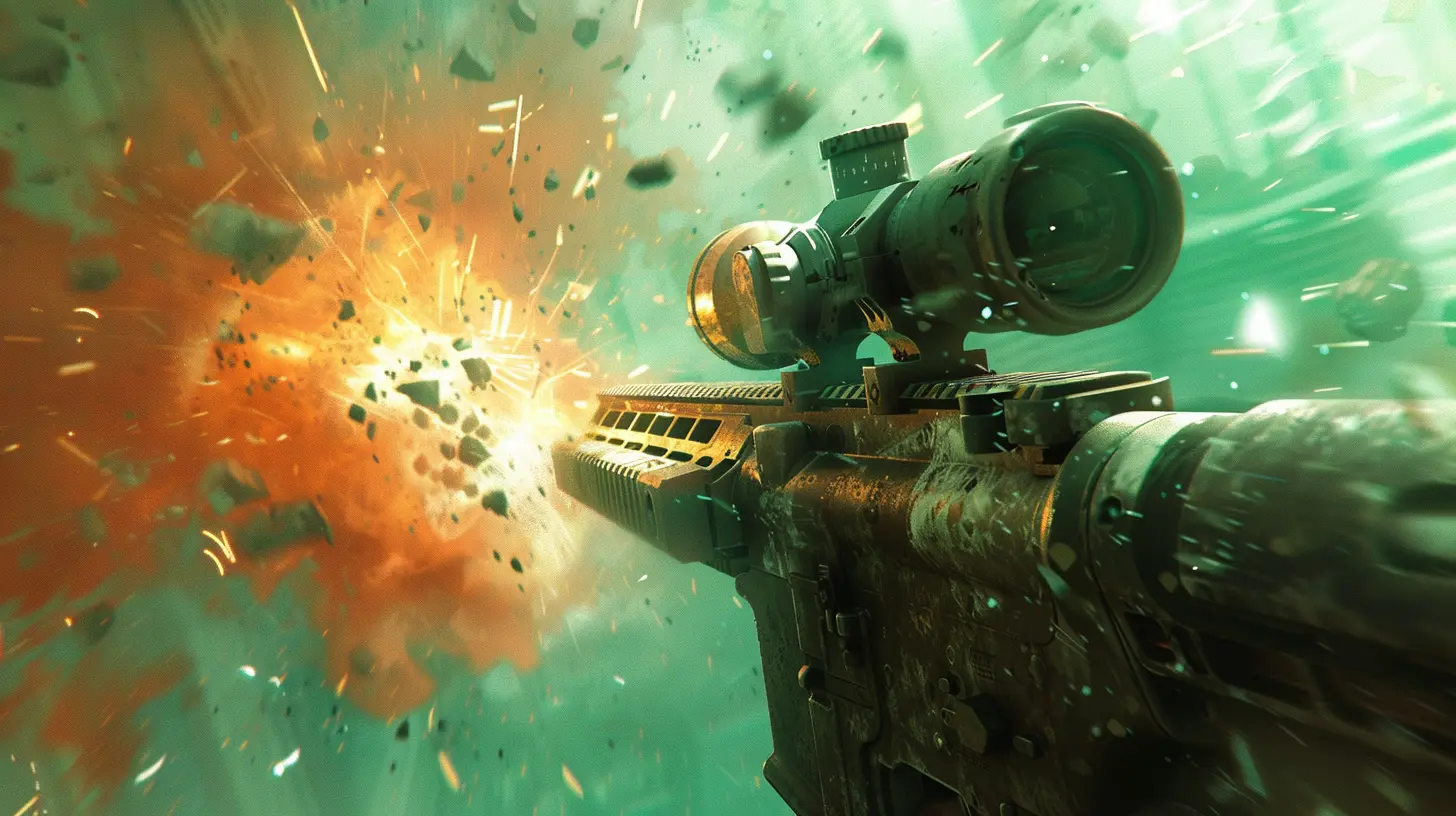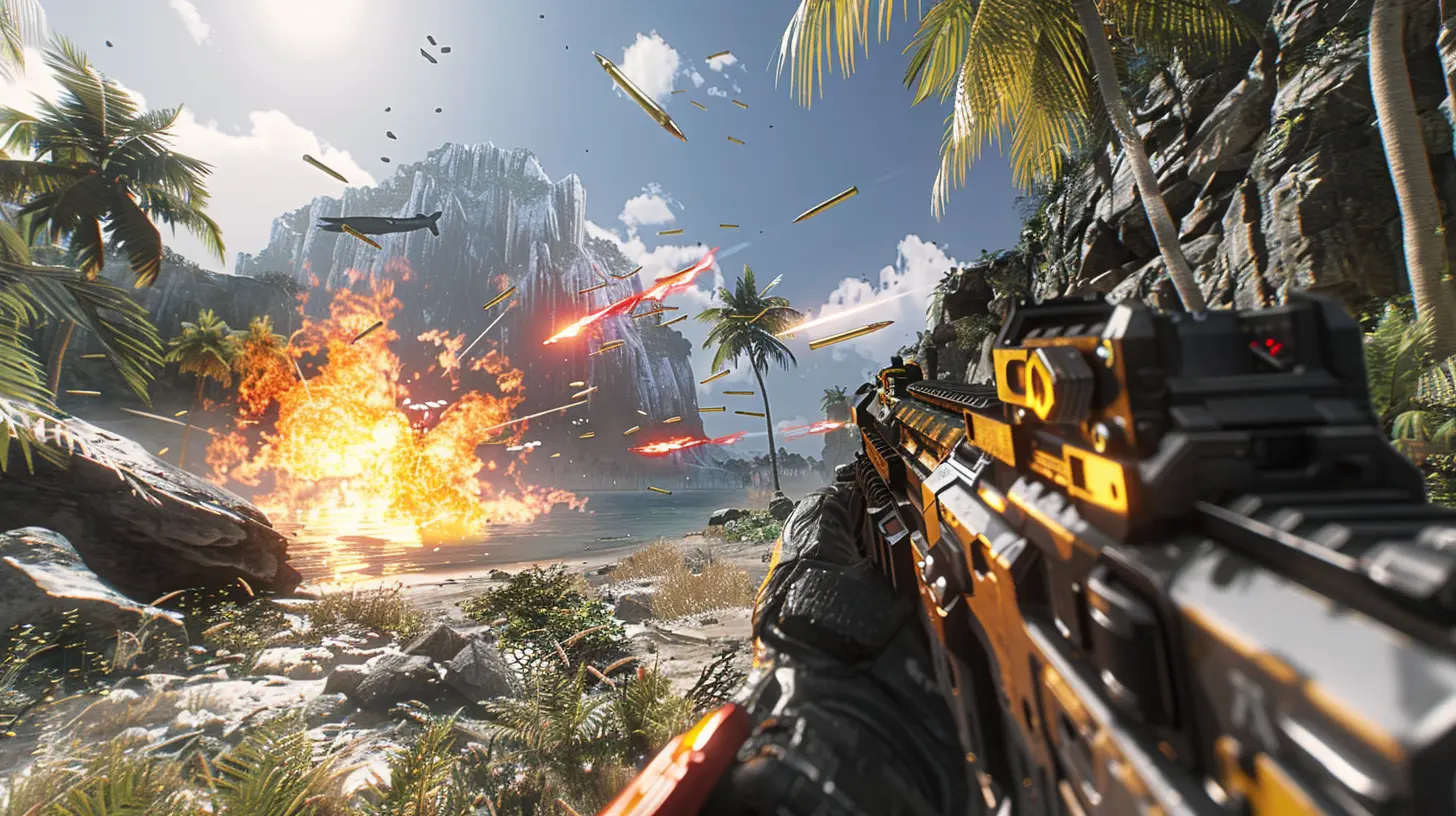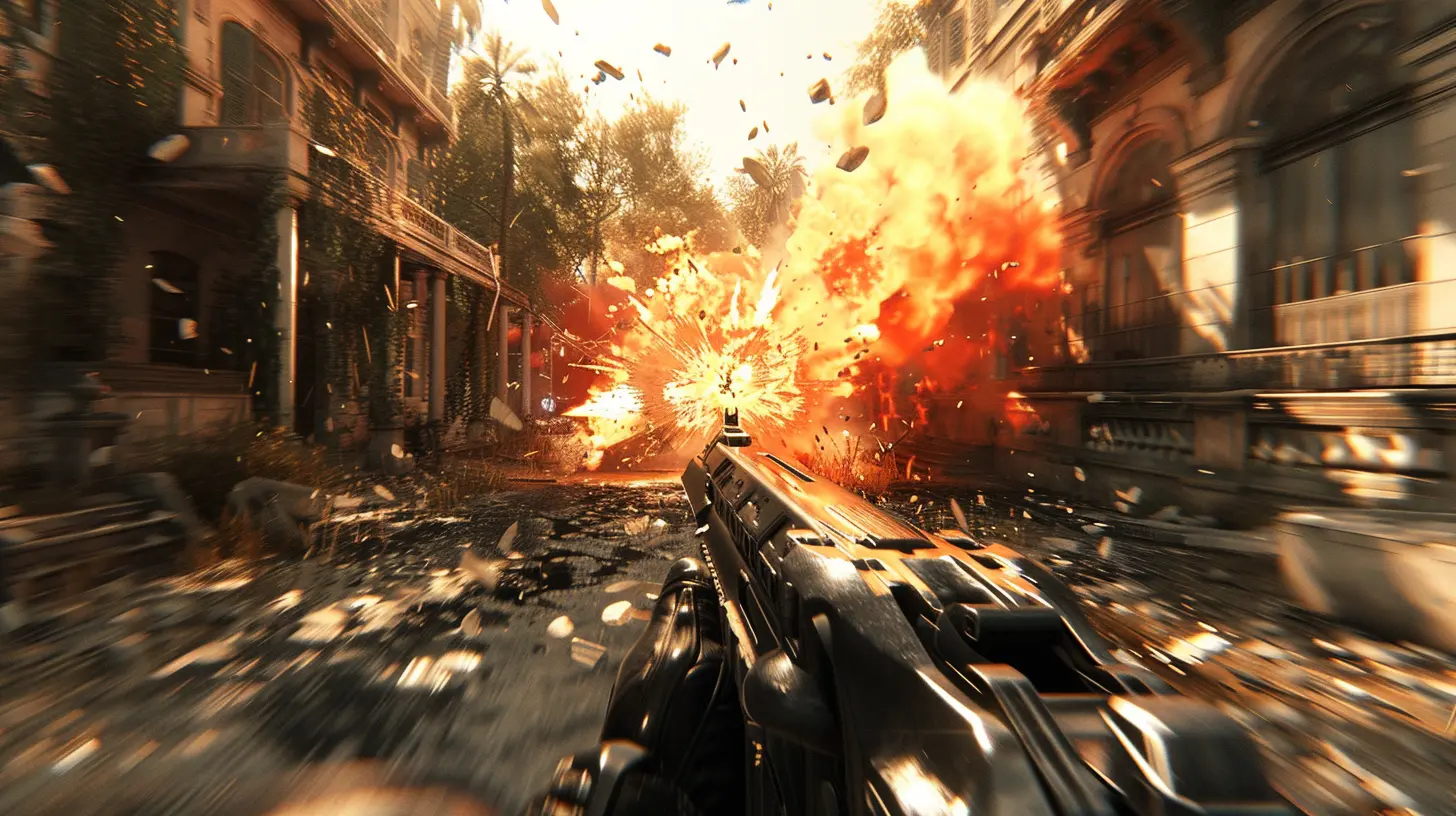Breaking Down Bullet Physics in First-Person Shooters
2 September 2025
When it comes to first-person shooters (FPS), few things are as satisfying as landing the perfect headshot. But have you ever stopped mid-game and wondered how that bullet travels from your weapon to its target? Is it just a straight line? Or is there more to it? Well, that's what we're here to talk about today—bullet physics in first-person shooters. It's not just math and code; it's the backbone of what makes these games feel real (and challenging).
From the days of hitscan weapons to modern-day simulated ballistics, bullet physics has come a long way. So grab your ammo and let’s dive into the nuts and bolts of what makes your favorite FPS games tick.
What Are Bullet Physics in FPS Games?
At its core, bullet physics refers to how a game simulates the behavior of a projectile (like a bullet) fired from a weapon. It involves everything from the path the bullet takes, how fast it travels, whether gravity pulls it down, and even whether environmental factors affect it. In short, it’s the virtual recreation of real-world ballistics.Why Does It Matter?
Think about it: if every shot you fired in a game went straight to the crosshair without any delay, it wouldn't feel realistic. Bullet physics is what makes sniping at a distance satisfying or hitting moving targets tricky. It’s a key factor in how immersive and skill-based an FPS can feel.
Hitscan vs. Projectile-Based Weaponry
Before we get into the nitty-gritty of bullet physics, we need to cover an important distinction: hitscan vs. projectile-based systems. These are the two primary ways shooters simulate gunfire.Hitscan: The Instant Bullet
Hitscan is old-school but still incredibly common in games. When you fire a hitscan weapon, the game doesn’t actually simulate a bullet traveling to the target. Instead, it instantly calculates whether your crosshair intersects with an enemy or surface.Think of it like flipping a light switch. The moment you click, the hit is registered. There's no travel time, no drop-off, and no wind interference—just a straight line to the point of impact.
Pros of Hitscan:
- Instant Feedback: Perfect for close-quarters combat.- Low Computational Cost: Easy for game engines to handle.
Cons of Hitscan:
- Less Realism: Long-range shots feel unnatural.- Limited Strategy: No bullet drop or travel time means less skill is involved.
Games like Call of Duty and early versions of Counter-Strike often rely on hitscan mechanics for weapons like pistols and SMGs.
Projectile-Based: The Realistic Bullet
On the flip side, projectile-based systems simulate an actual object moving through the game world. The bullet has travel time, is affected by gravity, and sometimes even reacts to environmental factors like wind.This adds a layer of realism that can dramatically change gameplay. Snipers in Battlefield or Arma games aren't just pointing and clicking; they’re accounting for bullet drop, lead time, and even how fast the enemy is running.
Pros of Projectile-Based Systems:
- Realism: More accurate representation of real-world ballistics.- Skill Expression: Requires technique and practice to master.
Cons of Projectile-Based Systems:
- Computationally Demanding: Harder for game engines to simulate.- Learning Curve: Challenging for beginners.

Key Aspects of Bullet Physics in FPS Games
Let’s zoom in on the major components that make up bullet physics. These are the behind-the-scenes mechanics that transform a simple "pew pew" into a full-on physics simulation.1. Bullet Drop
Bullet drop is exactly what it sounds like. In real life, gravity pulls bullets downward as they travel. Games with projectile-based systems tend to mimic this, meaning you’ll need to aim slightly above your target at long distances.Want a mental image? Picture tossing a ball. If you throw it straight, it starts high but eventually arcs downward. That’s bullet drop in action. Games like Battlefield are famous for requiring players to compensate for it.
2. Travel Time
In hitscan systems, bullets hit instantly. But in projectile systems, bullets take time to reach their destination. This means you’ll need to "lead your shots" when firing at moving targets—similar to how a quarterback throws the football ahead of a sprinting receiver.It’s a mechanic that rewards patience and precision. Few things feel more satisfying than nailing a shot because you correctly predicted where your target would be.
3. Recoil & Spread
Recoil and bullet spread are part of the shooting experience. Recoil simulates the kickback of a gun, forcing you to adjust your aim. Bullet spread adds randomness to each shot, especially in rapid fire.These mechanics make it harder to "spray and pray" and encourage short, controlled bursts. They’re quintessential in games like CS:GO and Valorant, where mastering weapon control is everything.
Advanced Mechanics: Taking It to the Next Level
Modern FPS games have started incorporating even more advanced mechanics to make bullet physics ultra-realistic (or ultra-fun).Wind and Environmental Factors
Some hardcore shooters, like Sniper Elite, go full simulation mode by adding external factors like wind, humidity, and even altitude into the mix. A shot that’s perfect in still weather might veer off course with a gust of wind. This forces players to think like real-world snipers.Penetration and Ricochet
Ever shot through a wall to hit an enemy in Rainbow Six: Siege? That’s penetration physics at work. Some games also simulate ricochets, where bullets bounce off surfaces depending on their angle and material. These systems add depth and unpredictability to combat.The Tech Behind Bullet Physics
While all of this sounds incredible, it’s important to remember that bullet physics is, at its core, a product of game engines and code. Developers rely on physics engines like Havok, Unity, or the Frostbite Engine to handle these calculations in real time.Each bullet is essentially a small object with properties like mass, velocity, and drag. The game engine uses algorithms to determine its movement and interaction with the environment. Sounds complicated? It is—but the payoff is worth it.
Why Bullet Physics Enhance Gameplay
Okay, let’s get real for a second. Why does all this even matter? Why not just stick with simple hitscan mechanics?The answer is immersion. Good bullet physics make you feel like you’re part of the action. They add layers of strategy that force you to think on your feet. A sniper duel in Battlefield feels like a test of skill, not just aim. A close-quarters fight in Rainbow Six feels intense because you know bullets can go through walls.
At the end of the day, bullet physics make games more than just games—they make them experiences.
The Future of Bullet Physics in FPS
As technology advances, so do our expectations for realism. With the rise of ray tracing, AI, and more powerful hardware, we’re likely to see bullet physics reach new levels of complexity. Imagine bullets that react to lighting, heat, or materials in ways we can’t even predict yet. The sky’s the limit.One thing’s for sure: the days of point-and-click simplicity are behind us. And for fans of first-person shooters, that’s a win.
Wrap-Up
Bullet physics might not be the first thing you think of when you boot up your favorite FPS, but it’s a fundamental piece of the puzzle. Whether you’re lining up a long-range shot or spraying bullets in close combat, the physics behind those tiny virtual projectiles make or break the experience.So the next time you’re in-game, take a moment to appreciate all the work that went into making that perfect headshot feel so satisfying. After all, those bullets aren’t just pixels—they’re the result of years of innovation and love for the craft.
all images in this post were generated using AI tools
Category:
First Person ShooterAuthor:

Pascal Jennings
Discussion
rate this article
1 comments
Corinne McQuade
Bullet physics in FPS games? It’s like watching spaghetti dance at a wedding—unexpectedly chaotic, yet oddly satisfying! Just don’t forget to bring your virtual goggles for the wild ride!
September 15, 2025 at 3:50 AM

Pascal Jennings
Thank you for the fun analogy! Bullet physics does bring a unique chaos to FPS games, making every encounter unpredictable and thrilling. Glad you enjoyed the article!


